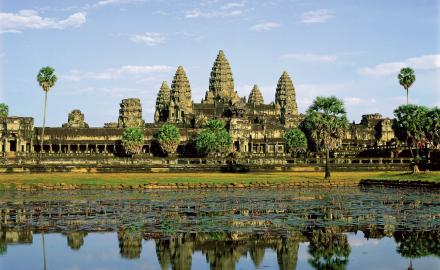India, a land of a thousand flavours
India covers a territory as large as a continent. There are thus considerable differences between regions in terms of cuisine.
In the north, Kashmir and Punjab have fertile lands (growing aubergines, okras, peppers, guavas, etc.) and form the country’s largest grain stores (basmati rice). Its cuisine is similar to that of its neighbour Iran. As such, more meat is eaten here than in the rest of India (chicken, mutton, lamb and beef). It is eaten in koftas (meatballs), kebabs (on skewers), curry (in sauce) tikka (marinated), korma (braised) or tandoori (cooked in the oven). Biryani, a dish made from rice and sauce mixed in with vegetables and meat, is also very common. Finally, dishes are served with all sorts of bread (brought by the Mughals), eaten plain, topped with butter, stuffed with cheese, etc.
In the east, vast coastal areas make fish and shellfish the basis of the diet in Bengal and Bihar: Dahi Maach (fish curry with turmeric and ginger fl avoured yoghurt), Malai (prawn curry with coconut), and more. Seasoning is mild and aromatic thanks to, among others, panch phoran, a mix of cumin, fennel, fenugreek, black mustard and black cumin seeds.
In the west, Goa, a state that was occupied by the Portuguese at one time, retains the memory of this era in its cuisine with colonial influences, as demonstrated by the vindaloo curry (inspired by the vinha d’alhos, a sauce with wine and vinegar spiced with garlic).
On the coast, Bombay is another area where fi sh and seafood are plentiful: specialities include Bombay Duck (curried or fried Bombloe fi sh) and the pomfret (Indian salmon). The centre, it is said, is the region where the fi nest gastronomy can be found, since it is the point where all of India’s cuisines meet. Delicious dishes such as the excellent lamb flavoured with cinnamon, cardamom coriander and clove can be enjoyed here.
The south, a traditionalist region, has a cuisine that is essentially vegetarian, but is literally scorching due to a wide range of southern spices (including red and green chillies). Steamed rice, yoghurt and milk in different preparations are often the only way to cool down the heat of even the simplest of curries.
Something that all of the regions have in common is the importance of desserts.
Finally, to quench your thirst, the must-have drink in India is lassi, made of yoghurt. Whether plain, salted or sweetened, it is always served chilled. However, India is the world’s leading producer of tea (chai), and this is the country’s most common drink. It is drunk sweet, sometimes boiled in milk, cardamom and other spices.

